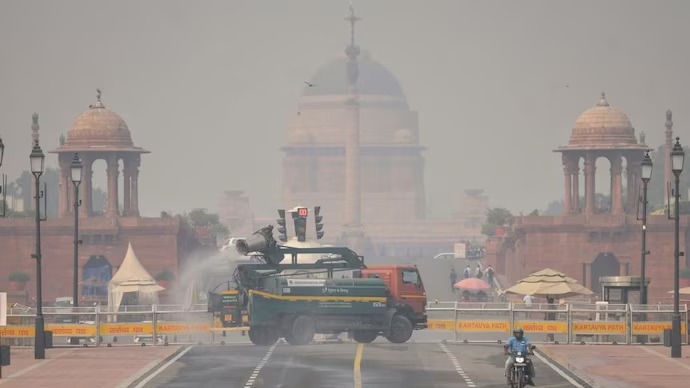New Delhi became the world’s most polluted city after Diwali, with PM2.5 levels soaring to 675 and AQI readings above 400 in several areas. Despite firecracker restrictions, widespread violations and stagnant weather led to hazardous air. Experts urge stricter enforcement and long-term pollution control strategies to prevent recurring health crises.
New Delhi has emerged as the world’s most polluted city following Diwali celebrations, with air quality plunging to hazardous levels. Despite restrictions on firecrackers, widespread violations and stagnant weather conditions triggered a toxic haze across the capital, pushing PM2.5 concentrations to alarming highs and sparking health concerns.
Key Developments Post-Diwali
- Delhi recorded its worst post-Diwali air quality in four years, with PM2.5 levels peaking at 675—over 59 times the WHO’s recommended limit
- The city’s 24-hour average Air Quality Index (AQI) reached 345 on Diwali day and climbed to 350 the following morning, placing most areas in the “very poor” to “severe” category
- Monitoring stations in Bawana, Wazirpur, Lodhi Road, and Anand Vihar reported AQI readings well above 400, indicating hazardous conditions
- The Supreme Court had permitted “green crackers” for a limited window, but enforcement was lax, with firecrackers bursting well beyond the allowed hours
- Cross-border impact was also noted, with Lahore’s AQI reaching 266 due to drifting pollutants from northern India
- The BJP government attributed the spike to stubble burning in Punjab, while environmentalists pointed to local violations and insufficient mitigation measures
Cultural and Environmental Context
Diwali, the festival of lights, often sees a surge in pollution due to firecracker use. Despite growing awareness and legal curbs, enforcement remains inconsistent. The resulting smog not only affects Delhi but also neighboring regions, exacerbating respiratory illnesses and reducing visibility.
Industry and Policy Outlook
Experts call for stricter implementation of pollution control norms, enhanced public awareness, and investment in clean technologies. Emergency measures like anti-smog guns and water sprinklers have been deployed, but long-term solutions—such as cleaner transport and crop residue management—are urgently needed.
Sources:
[1] MSN News – Delhi Air ‘Very Poor’ After Diwali
[2] MSN News – Delhi Tops World’s Most Polluted Cities
[3] MSN News – Diwali Fireworks Push Lahore Into Pollution Crisis
[4] India TV – Delhi’s Most Polluted Areas Post-Diwali
[5] NDTV – Delhi World’s Most Polluted City After Diwali
[6] Hindustan Times – Top 10 Polluted Areas In Delhi

